Discovering Sri Lanka – UNESCO world heritage sites at Dambulla, Sigiriya, Polonnaruwa.
Leaving Colombo, Sri Lanka’s capital city behind, we were driven into the hills and stopped for refreshments beside a lake… a peaceful picture postcard scene where school children were painting the landscape. The fresh lime sodas are delicious too!
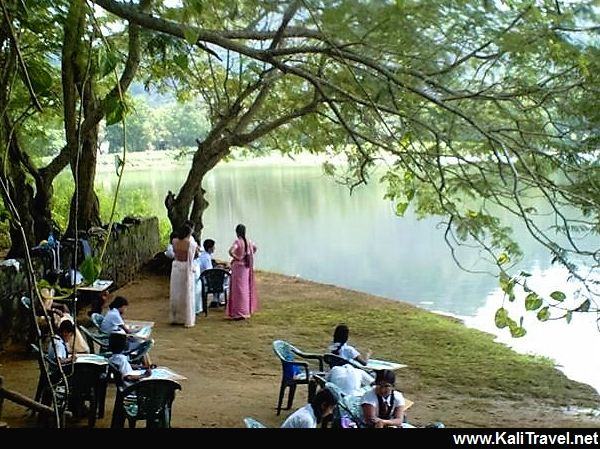
Next stop was Dambulla in central Sri Lanka, to visit the incredible Golden Temple, a UNESCO World Heritage Site with over 22 centuries of history. Dambulla Cave Monastery is a place of pilgrimage for Hindus and Buddhists located in the rock face some 100 metres above the road.
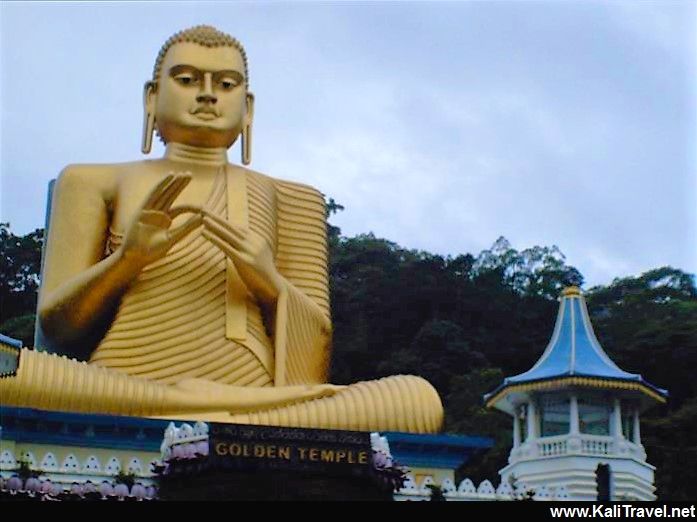
An immense golden Buddha statue guards the entrance and a trail of smaller images line the flight of steps up to the top where monkeys swing from mango trees outside the temple. Taking off our sandals, we walked barefoot around the sanctuary.
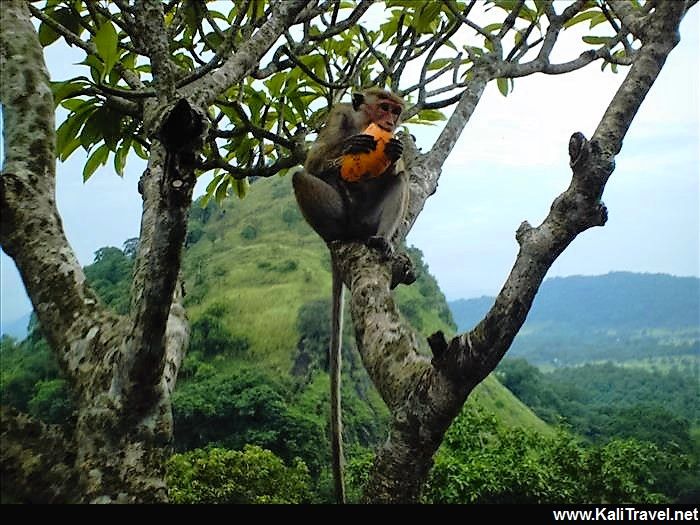
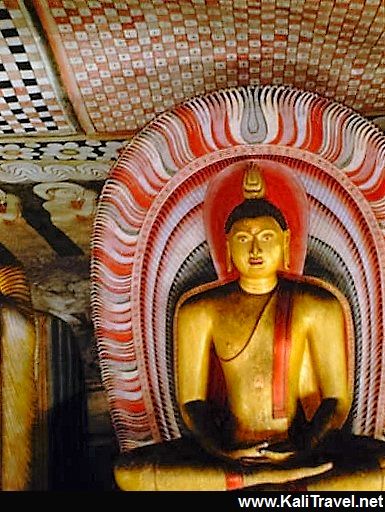
There are five cave shrines with painted walls and ceilings, frescoes portraying the life of Lord Buddha.
An astounding collection of different statues in various stances includes a 15mt reclining Buddha.
There’s not much light inside the shrines, presumably to preserve the cave paintings, and my photos taken without flash are much too dark!
Outside in the courtyard, a huge Bodhi tree is adorned with typical coloured garlands and hundreds of tiny packaged gifts tied to the branches.
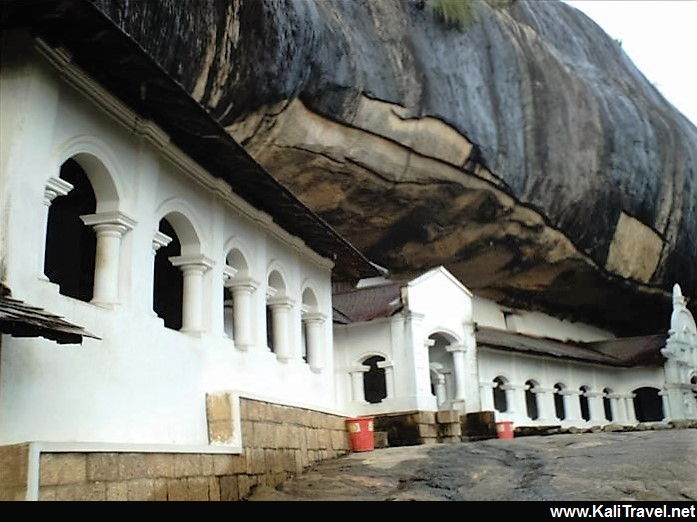
From here there are fabulous views over the countryside and to our next destination, the imposing rock fortress at Sigiriya. We arrived at Hotel Sigiriya late afternoon, a beautifully serene place with Zen décor, featuring a central patio and swimming pool area lined up exactly with Mount Sigiriya in the distance.
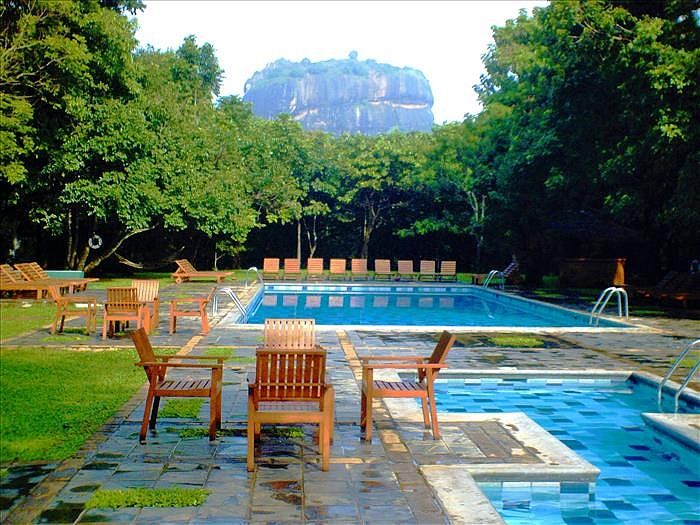
Next morning was our anniversary! We got up early for a bareback elephant ride through the marshes, an unforgettable experience. A young keeper accompanied us, walking barefoot through the jungle and swamps where the elephant sprayed water into the air with her trunk to show off her tricks.
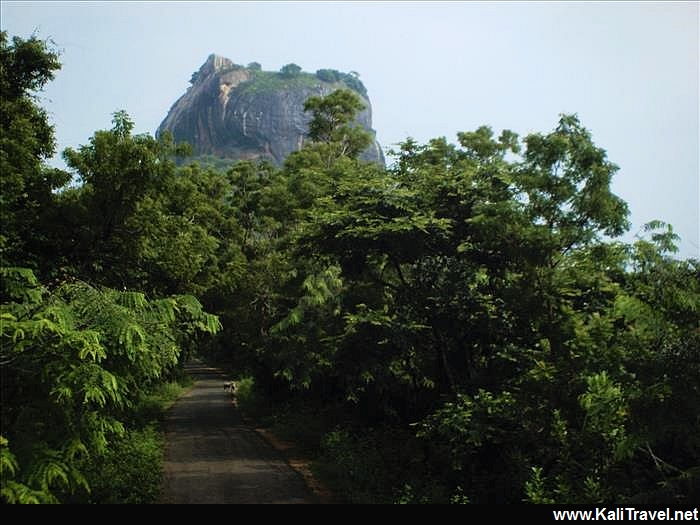
Mount Sigiriya presides the countryside for miles around; the ancient fortress is a legendary UNESCO World Heritage Site which attracts tourism from across Sri Lanka, especially children on school trips! Speaking to the teachers, we find out they are Tamils from Jaffna, one of the unmissable places to visit in the north of Sri Lanka.
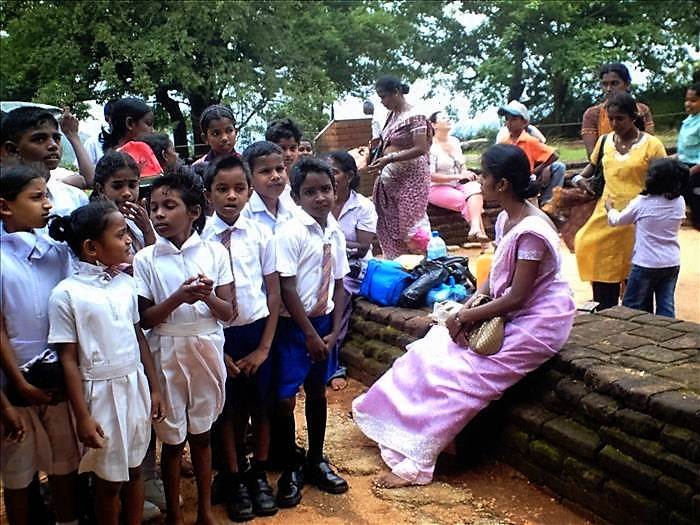
We followed the tree-lined paths through the ancient landscaped water gardens – possibly the oldest in the world – past watercourses, streams, pools and fountains, to the boulder garden at the base of Mount Sigiriya and the terraced gardens where stairs lead up the sheer rock face.
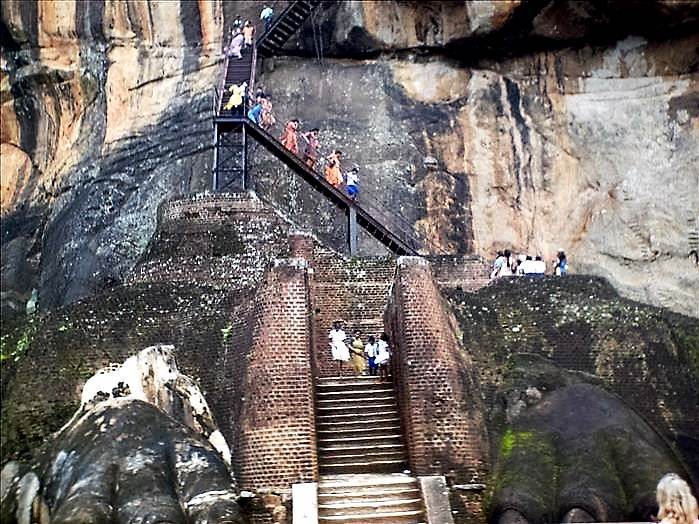
The gateway to the citadel is through ‘lion rock’ (originally hewn into the shape of a lion) although you can only see the great paws as the rest has crumbled away. Partway up there’s an unusual ‘mirror wall’, engraved with ancient graffiti, verses and love poems written many centuries ago. A spiral stairway continues up past an area of unusual frescoes – it is thought that the entire rock face was once covered in paintings.
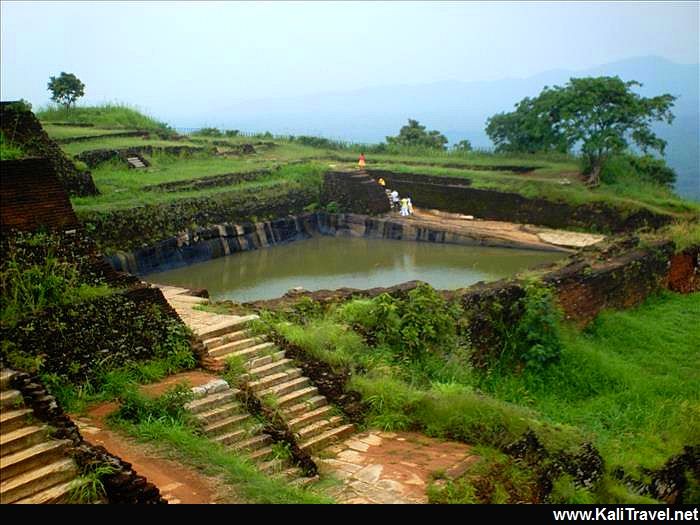
As we climbed up countless steps to the summit, our guide outlined the history and folklore. Cavemen lived here in prehistoric times, and the caves were used by monks as a monastery from the III century AC.
The defensive fortress, palace and surrounding gardens were built by King Kasyapa in the V century who had taken the crown by force after murdering his father. He eventually committed suicide after a battle with his brother, and Sigiriya continued as monastery again up till the XIV century.
The ruins of the palace are on the plateau at the top of the mount, it’s more of an archaeological site, but worth the hike up for the 360º panoramic views. If you have longer in Sigiriya, there’s another hike to Pidurangala Rock, a landmark which can be clearly seen from here.
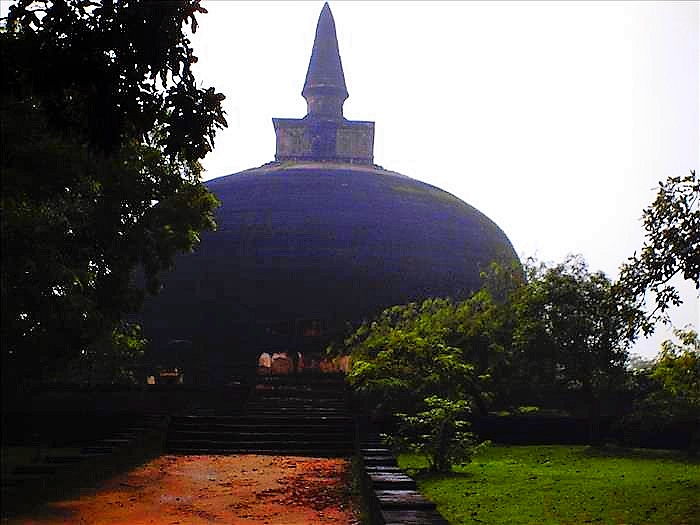
In the afternoon we drove through jungle roads to Polonnaruwa, an 11th century city, yet another World Heritage Site! The ancient buildings contrasting darkly against the vast green parkland, a haunting setting where you can envision a dramatic past some 12 centuries ago. Anuradhapura the capital of the kingdom fell to invaders, so a walled city was buit further south – Polonnaruwa.
There are numerous palaces, temples, monasteries and artificial lakes, and close by, the massive Parakrama Samudra reservoir which is still in use. At the heart of the abandoned ‘lost city’, uncovered by archaeologists in the 19th century, the raised Quadrangle complex stands out above the rest of the ancient architecture; other major points of interest include a rock shrine, and fabulous Buddha statues especially the immense iconic reclining stone Buddha!
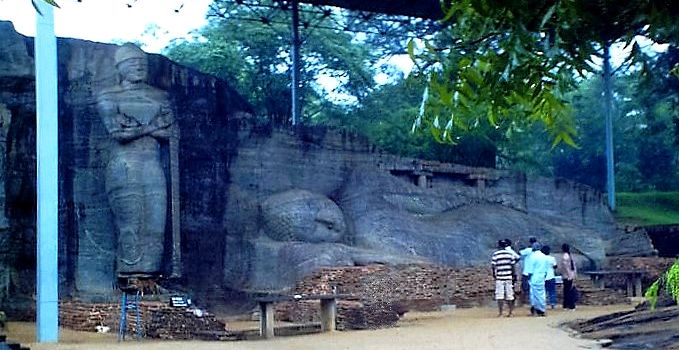
On our way back, we visited a wood carving outlet with the most amazing sculptures on display. I bought a lucky mask and some small carved elephants as gifts, but the most beautiful pieces are so big they need be shipped home. Our driver took a longer route back to the hotel, as it was dark and we could not cross the jungle roads as there were wild elephants roaming! Or so we were told.
Related Posts on Sri Lanka
Follow our travels through Sri Lanka to discover the wonders of this beautiful country.
- Sri Lanka the Emerald Isle – Colombo City Tour
- Visiting Dambulla, Sigiriya & Polonnaruwa
- Spice Gardens & Batik in Matale / Sacred Temple Kandy
- Kandy: Peradeniya Botanical Gardens / Temple of the Sacred Tooth Relic
- Kandy: Giragama tea plantation / Embekke, Lankathilake & Gadaladeniya temples
- Pinnawala Elephant Orphanage
- Negombo Beach and Catamarans
Discover the World with![]() the blog with a focus on independent travel
the blog with a focus on independent travel



